Hedgerows are incredibly beneficial plantings that can provide food, privacy and wildlife habitats. We recently planted a hedgerow in our pasture to increase biodiversity & security and to provide shelter & forage. Here are all the details and a full list of the plants we included!
Hedgerows have a long history of use, particularly in the U.K., where they were commonly planted to separate fields. But, hedgerows shouldn’t be reserved just for those beautiful historic farms!
It’s time for hedgerows to make a come-back!
Which is exactly why I knew that our property needed a hedgerow – something I’ve wanted for years! And, after some long days of planning and planting, my hedgerow dreams are finally coming true!
We recently planted a 170-ft hedgerow border along our horse pasture. But, before we get into the details of our hedgerow, let’s talk about why everyone should have a hedgerow, whether big or small!
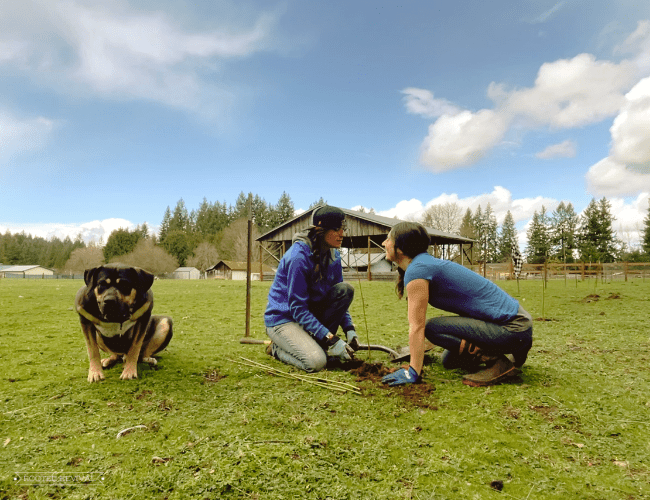
What are hedgerows?
Hedgerows, by the simplest definition, are a living fence. It’s an intensive planting method that utilizes naturally suckering or spreading shrubs and low trees to create a densely planted border. This is used as a barrier to separate fields and other areas. Hedgerows usually utilize a variety of plant species, from herbs and forbs to small trees and shrubs.
Benefits of Hedgerows
Hedgerows provide the basic function of creating a barrier for fields and animals. But they provide so much more than just that! They provide shelter and forage for wildlife, birds, pollinators and beneficial insects. There are enormous benefits of providing habitats to these types of creatures! In fact, studies have shown that hedgerows dramatically increase the amount of predatory insects. And those benefits can even extend hundreds of feet! (Check out this study or this article for more info!)
But there are still more benefits! Hedgerows provide amazing wind breaks and shelters. The growth will also provide shade. This reduces the overall temperature of the space, making it more suitable for plants, animals and people. The plant roots help stabilize soil, reduce compaction and protect topsoil from from erosion.
A living fence also helps protect natural resources (lumber) that would otherwise be used to create the fence. The hedgerow plants provide us with clean, healthy air! And, they provide privacy and help block/reduce noises.
Oh, and don’t forget that most hedgerow plants also provide herbal, medicinal and edible products! Foraging among the hedgerows was once a common practice! Plus, a hedgerow can provide ample wood for kindling, basket weaving and even waddle fencing! Just think about how many amazing resources we lost as the hedgerow’s popularity declined.
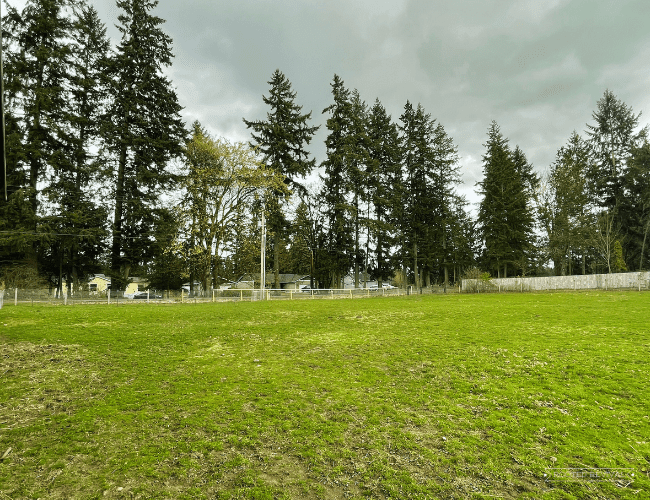
Our Hedgerow Goals
Whenever I begin designing a polyculture/guild or any other landscape design, I start with our goals. This allows me to have a very clear focus on which plants will support the overall desire of the design. It makes selecting plants for the area much easier!
While each plant may not meet all of the goals, it’s ideal for each of the plants to meet as many as possible. This is a great application of the permaculture principle that each element in your permaculture systems should perform as many functions as possible.
For this design, I started with the following goals in mind:
- Create a natural border along eastern perimeter of our livestock pasture
- Increase biodiversity by using native species to support native birds, insects and other wildlife
- Utilize native plants that match our soil type and environment for easier care and lower maintenance. Must be able to handle a prolonged wet season as well as a summer drought season.
- Provides shelter and shade for livestock
- Increase the security of our fence line
- Provide privacy from the road and houses that border the fence line
- Plant varieties that can provide additional yields (nuts, fruit, lumber, dye, berries, etc.) should be given extra consideration.
- Provides livestock more natural grazing options through a mix of forbs, herbs, shrubs, trees, etc.
- All varieties must be livestock safe as the horses and goats will be nibbling and browsing the plants.
Want to see the process of planting our hedgerow?
Check out our vlog about it on YouTube!
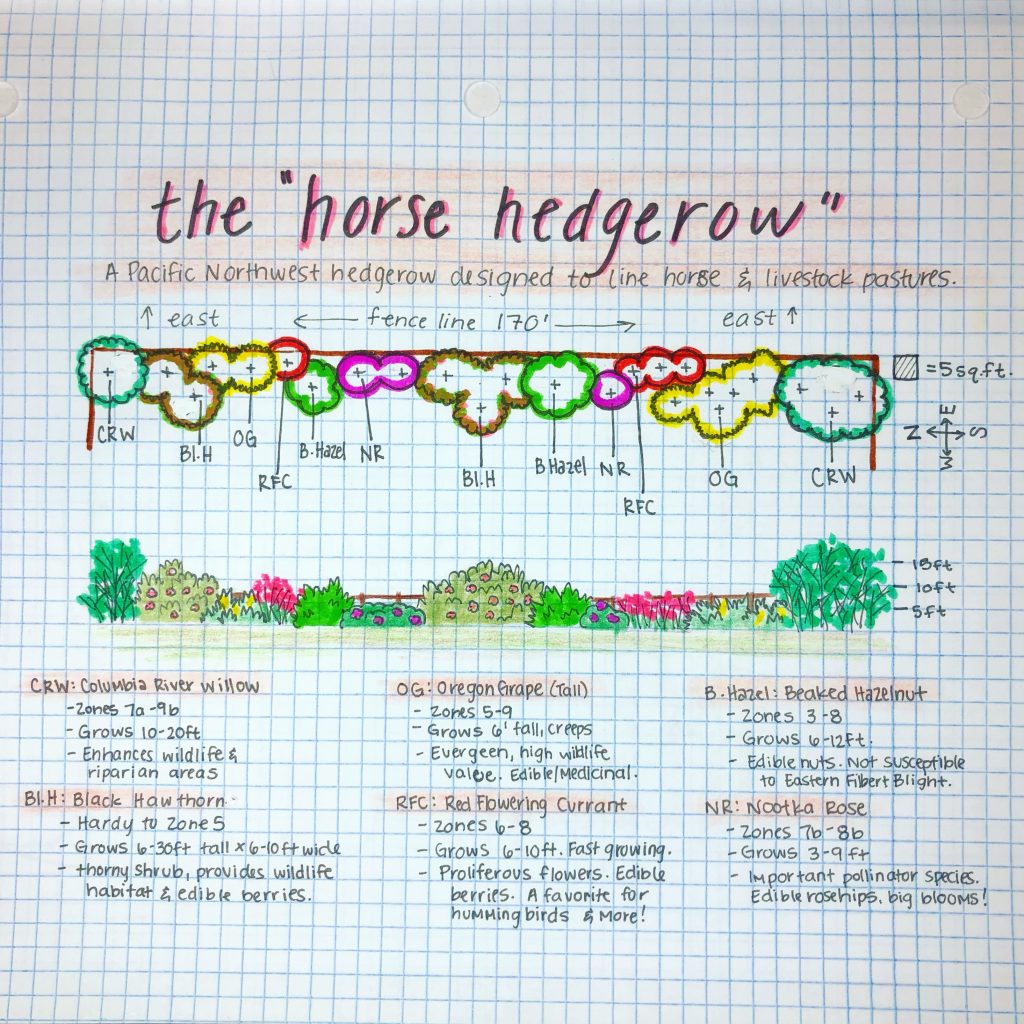
Preparing for our Hedgerow:
I have been planning this hedgerow for over a year. (You can see the original design concept above.) It became a reality In March of 2022! And let me tell you, I am so excited to see this hedgerow take off and start filling in over the next few years!
To begin, we marked out our hedgerow area. The hedgerow will line the eastern border of our 1-acre horse pasture. The actual hedgerow space is about 10 feet in width by 170 feet in length.
The livestock that use this pasture include our two mini horses and our two haflinger horses. They rotate between this pasture and our other pastures. The milk goats also occasionally graze in this pasture… mostly when they escape from their own pasture! And, of course, the free range chickens go wherever they want!
Fencing
Obviously, we can’t allow the livestock to have full access to the hedgerow because they would devour it before the plants have a chance to establish. So, we created a temporary fence line to enclose the area.
We used t-posts and stretched woven wire fencing along it. We left an opening in one of the panels so that we can go into the fenced area when needed to maintain the plants and weed eat the grass growth.
The wire fence will protect the plants from the goats and horses while they get established. We also plan to string a line of electro-braid hot fence along the top. This will help deter the horses from pushing against the fence in an effort to reach the plants. Our haflinger horses are notorious for destroying fences by leaning on them!

Purchasing plants
We purchased the majority of the plants from our conservation district’s annual native plant sale. I was so impressed by the quality of the plants! While they are young plants, these varieties are all fast growers, so it won’t take long to fill in the space!
Since most of the plant were purchased through the native plant sale (except for hawthorn cuttings we took from our other hawthorn trees), they were all delivered in early March. We planted them a few weeks later, in mid-March.
This was ideal because they were all bare roots, which are most ideally planted during the cool season (late winter into early spring). This allows the plants time to get established while they are still dormant or semi-dormant.
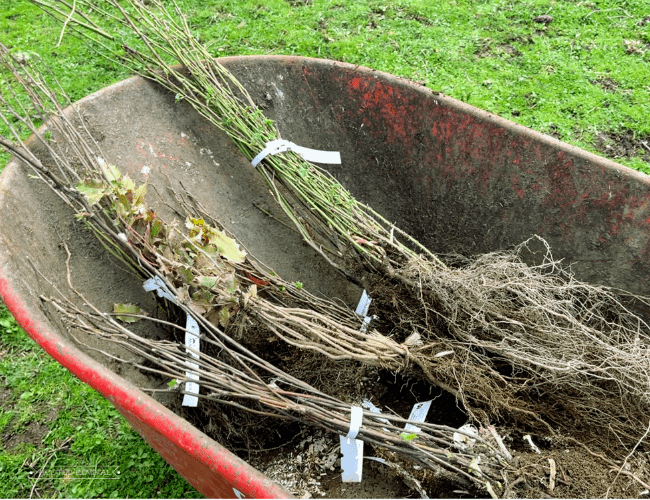
Selecting Plant Varieties for our Hedgerow
Since hedgerows have largely fallen out of fashion in the US, most of my research was based on the livestock hedgerows used in the UK. And the UK is truly the authority when it comes to hedgerows anyways!
Once I had a better understanding of hedgerows, I set out to adapt the traditional plant species to ones that would thrive and survive in the climate of the Pacific Northwest. I also wanted to use as many native species as possible.
Below are the species that we decided to initially incorporate into our hedgerow. We will probably adapt and add to these species over time. So I will try to update this post as we do so!
Midland (English) Hawthorn (Crataegus laevigata)
- Plant type: A fast growing deciduous shrub (or can be pruned into a small tree). Popular for hedgerows because of its spreading and thicketing habits along with its spiny thorns. The shrub produces pink blossoms in the spring and red berries that ripen in late fall. Spread should be controlled and contained to hedgerow to prevent it from escaping cultivation.
- Zones: 4-8
- Soil: Suitable for a variety of soil types (from clay to sand and slightly acidic to alkaline soils). Prefers moist soils but can handle periods of drought.
- Light: Full sun to full shade
- Parts used: leaves, flower, berries
- Benefits:
- Can be used medicinally in humans and animals and has a very long and safe history of use as a heart tonic.
- Large thorns help protect fence line, both to contain horses and keep predators at bay.
- Vasodilator: increases blood flow and helps improve circulation. This is especially great for senior horses, horses with arthritis and horses with navicular disease and laminitis.
- Antioxidant: berries are high in antioxidants which are cardio-protective and help reduce free radical damage,
- Berries are high in pectin, making them ideal for jams and jellies
- Provides shelter for birds
- References & resources:
Pacific Willow (Salix lucida)
- Plant type: Deciduous shrub/tree, one of the tallest PNW native willows at 15-45 ft.
- Zones: 3-9
- Soil: Prefers moist to damp soils that are sandy & loose
- Light: Full sun to part shade
- Parts used: leaves, bark
- Benefits:
- Can be used medicinally in humans and animals.
- Anti-inflammatory properties can help reduce inflammation. This is especially helpful in senior horses that experience arthritis or laminitis. Many natural horse practitioners use willow bark as an alternative to Bute and aspirin since it is more gentle on the digestive system.
- Once established, the tree can be pruned regularly. Young branches can be used for a variety of purposes including basket weaving, wattle fencing and ornamental wreaths.
- Can help reduce erosion, especially in wetlands
- Provides wind block and wildlife shelter
- References & resources:
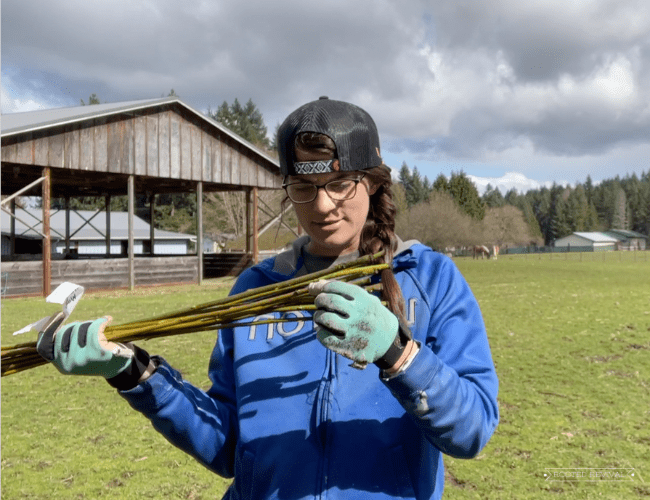
Nootka rose (Rosa nutkana) & Peafruit rose (Rosa pisocarpa)
*Note: I’m combining these two varieties because they are very similar
- Plant type: flowering deciduous shrub; sends out suckers, making it an ideal hedging plant
- Zones: 7b – 8b
- Soil: Well-drained. Prefers moist soils bu can handle dry periods
- Light: Prefers sunny locations (Baldhip rose – also native – does better in shaded areas)
- Parts used: hips
- Benefits:
- Plats reproduce quickly from rhizomes and can be used as a pioneer species to reforest areas and stabilize banks.
- Important food source for native insects and pollinators.
- Nootka produces large hips. Peafruit produces hips, but they are generally smaller in size.
- Rosehips are very high in Vitamin C and are used in herbal medicine for both humans and animals.
- Hips are beneficial in boosting immunity, reducing inflammation and improving hair and skin
- Large solitary flowers with pale to dark pink flowers encourage local pollinators
- References & resources:
- https://www.nrcs.usda.gov/Internet/FSE_PLANTMATERIALS/publications/wapmctn11818.pdf
- https://snohomishcd.org/blog/2017/7/17/go-native-with-hedgerows-and-buffers-on-horse-properties
- http://www.horsesforcleanwater.com/blog/fall-planting-on-horse-properties
- https://www.facebook.com/groups/796341627045558/search/?q=rosehips
- http://nativeplantspnw.com/clustered-wild-rose/
Tall Oregon Grape (Mahonia aquifolium)
- Plant type: Evergreen shrub. Varieties include: tall (Mahonia aquifolium), Cascade/long-leaf (Mohinia nervosa) and low/creeping (Mahonia reopens).
- Zones: 5-9
- Soil: Slightly moist, well-drained acidic soil
- Light: Full sun to shade
- Parts used: Berries, roots
- Benefits:
- Very beneficial to native wildlife, birds and insects.
- Bright yellow early spring flowers provide early season food source for pollinators.
- Antibiotic and antiviral properties for humans and livestock
- Anti-inflammatory
- Supports liver and kidney function
- Non-toxic to horses & livestock but shouldn’t be consumed regularly in large amounts
- References & resources:
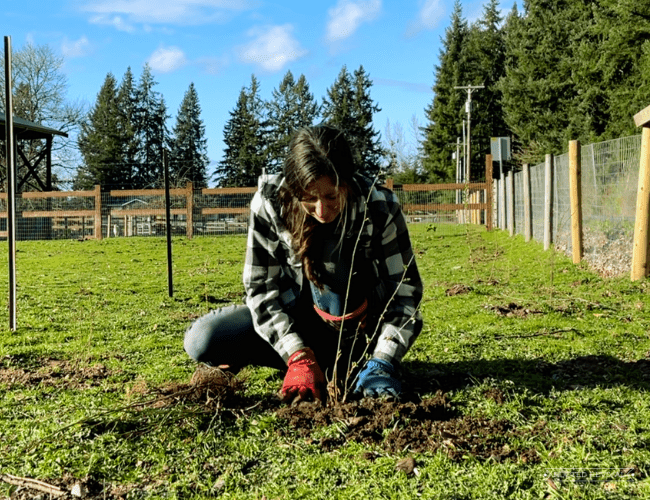
Red flowering currant (Ribes sanguineum)
- Plant type: Deciduous shrub
- Zones: 6-8
- Soil: Well drained. Drought-tolerant once established.
- Light: Full sun to part shade
- Benefits:
- Produces proliferous flowers and berries. Important for pollinators, birds, insects. A favorite of hummingbirds.
- Thicketing behavior occurs over time.
- Deer resistant.
- Berries are edible but not tasty – birds enjoy them though!
- Flowers can be used in teas
- Not particularly tasty to livestock, but also not toxic
- References & resources:
- https://snohomishcd.org/blog/2017/7/17/go-native-with-hedgerows-and-buffers-on-horse-properties
- http://www.horsesforcleanwater.com/blog/fall-planting-on-horse-properties
- https://www.growingwithnature.org/red-flowering-currants/
- https://www.nrcs.usda.gov/Internet/FSE_PLANTMATERIALS/publications/orpmcfs8194.pdf
Black cap raspberry (Rubus leucodermis)
- Plant type: Perennial berry plant
- Zones: 4-8
- Soil: Can grow in most soil types but prefers well-drained loamy soils
- Light: Full sun to part shade
- Parts used: Leaves and berries
- Benefits:
- Leaves are a great medicinal supplement for livestock and humans.
- Raspberry leaves are great for pregnant goats and other livestock as they support healthy uterine ripening in preparation for birth.
- Leaves are high in vitamins and minerals to support a healthy immune system.
- Raspberry leaves can be used to help regulate hormone levels in moody mare horses.
- Edible berries are a safe treat for animals and a great treat for humans too!
- Thorny canes and fast growing nature helps create a barrier
- References & resources:
*We have also included salmonberry and thimbleberry which are Pacific Northwest Natives similar to the black cap raspberry. You can find more info about them here:
- https://www.goodgrub.org/post/plant-of-the-month-salmonberry
- https://www.fs.fed.us/wildflowers/plant-of-the-week/rubus_spectabilis.shtml
- https://www.fs.fed.us/wildflowers/plant-of-the-week/rubus_parviflorus.shtml
- https://www.wildflower.org/plants/result.php?id_plant=RUPA
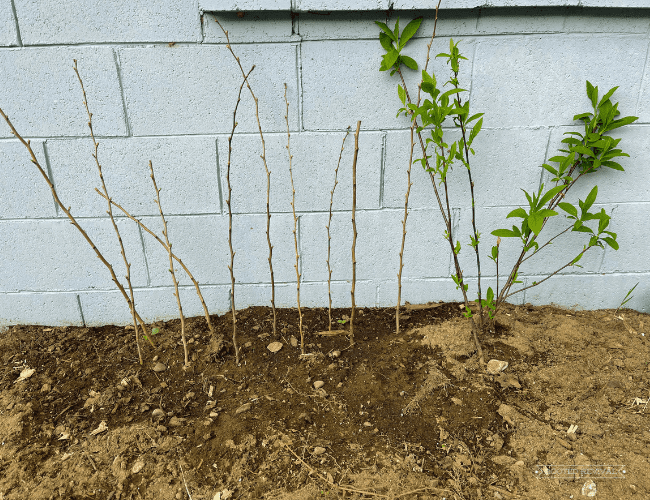
Gooseberry
I also purchased and planted some gooseberries in the horse pasture hedgerow. However, I am thinking about removing them and planting them elsewhere.
I have always been aware of the fact that they contain cyanide. However, I’ve always thought of them as relatively safe unless consumed in crazy high amounts. That was, until I read this article which contains quite the cautionary tale!
We have a few gooseberries in other parts of our property. But I have yet to taste a single gooseberry because our chickens eat all of the berries before they ever ripen! We’ve never had any health issues from this. However, a horse is very different from a chicken and I don’t want to take any unnecessary risks with their health.
I would love to hear if anyone has experience with gooseberries in or around their livestock pens. There is very little information available on this topic and I think it’s an important one to explore! Please let me know your thoughts and experiences in the comments!
Pin this post so you don’t forget it!
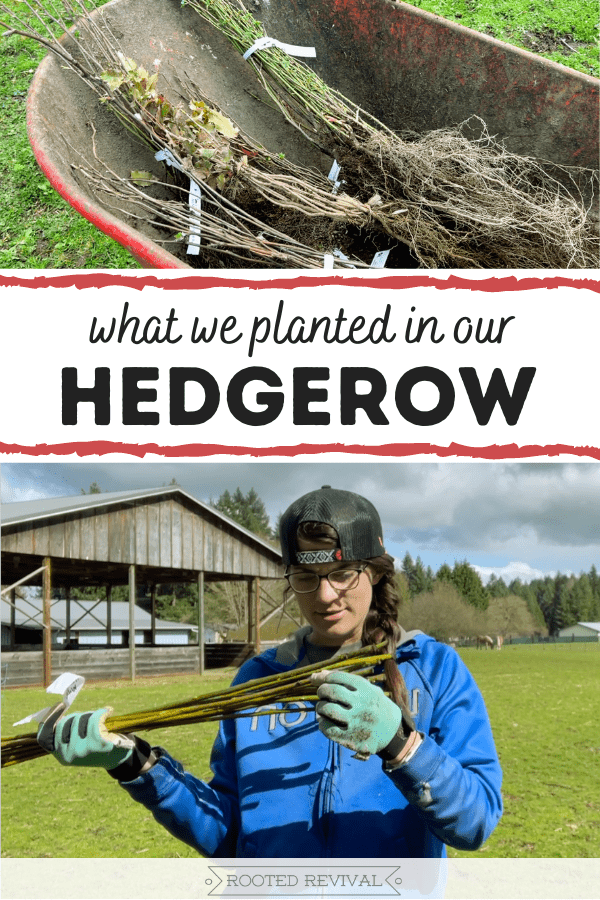
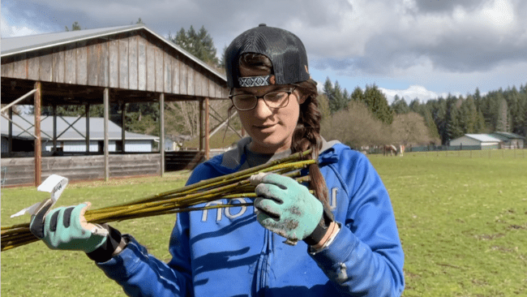



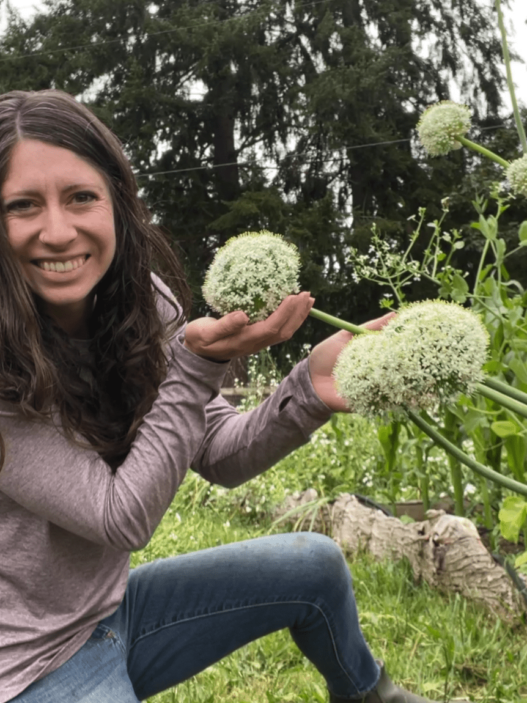

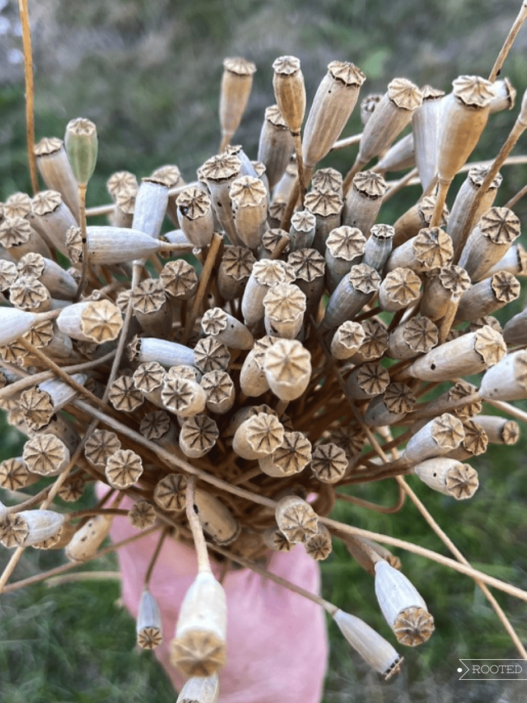
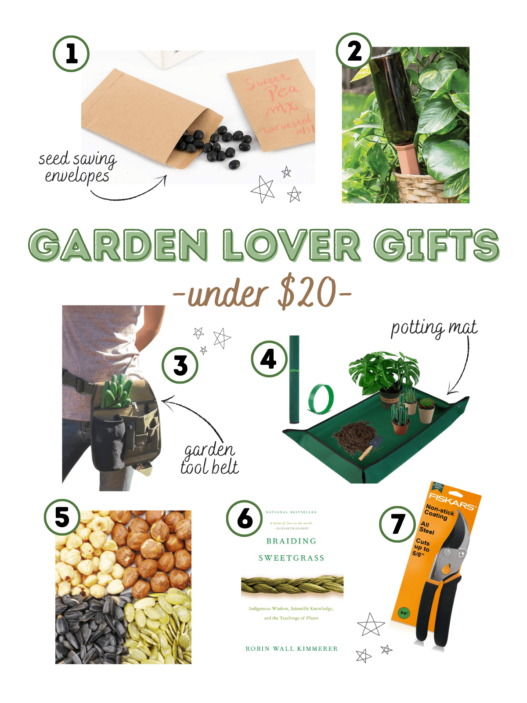
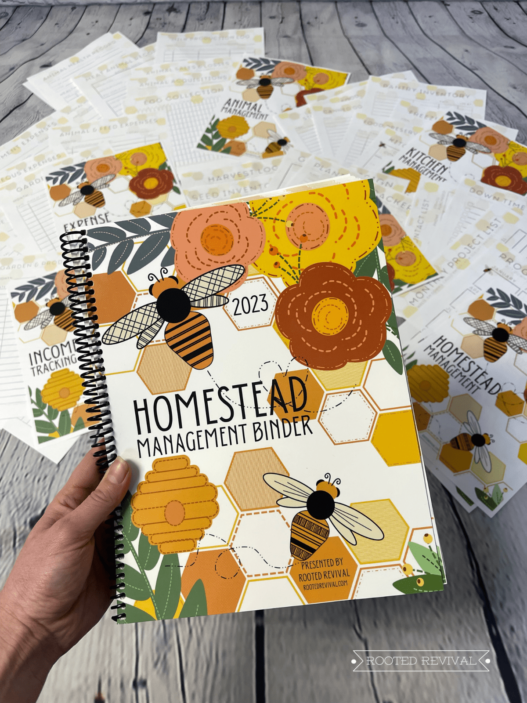
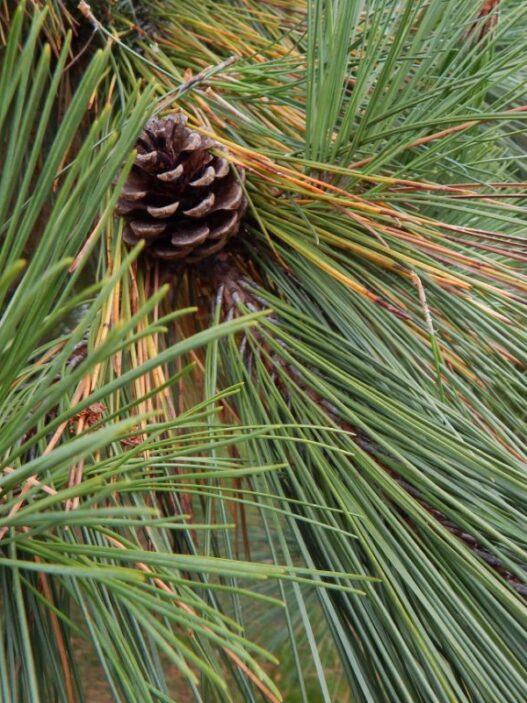
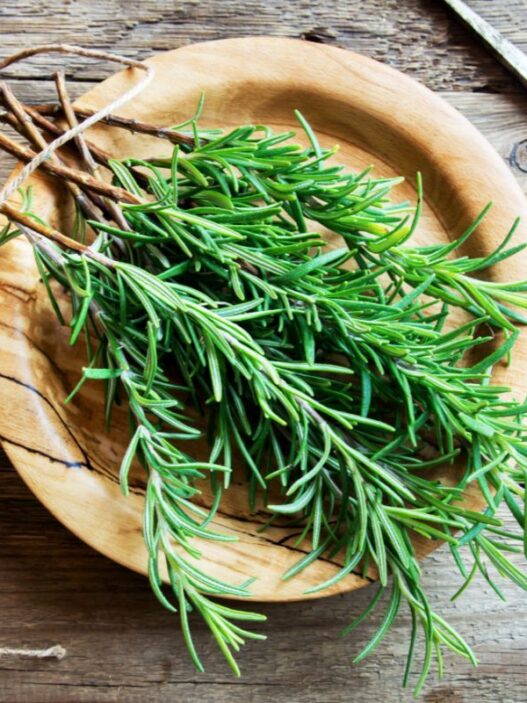
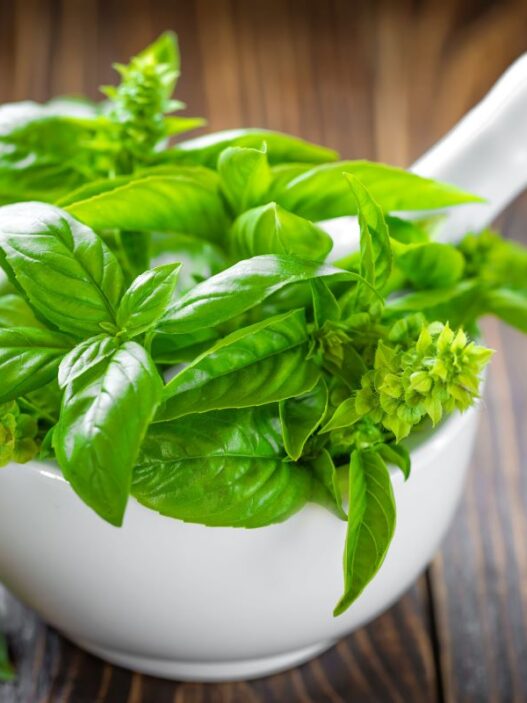
Wow, this article is exactly what I was looking for! I am also in NW Washington and am trying to find out about hedgerow for horse pastures. There is really not much out there, so I’m thrilled to have found your blog! Are you eventually planning to use the hedgerow as your only fence on that side of the pasture? Are you planning to keep the plants somewhat manicured, or will you just let them go wild?
I am so happy to hear that this was useful to someone! I agree that there isn’t a ton of info out there on this. I researched for several months to try and find good varieties. We’re having pretty decent luck getting it established but have definitely suffered some losses from the dry, hot summer (no water access in that area of our property). We will replace and replant some of the weaker ones this Fall and cross our fingers! I believe it will all be well worth it!
We plan to eventually implement a track system (Paddock Paradise style). So we will have the external fence which will stay in place for security along the road boarding the pasture. We will then have an inside fencing line. The horses will be able to graze along the hedgerow but it will slightly restrict their access to it. We have Haflingers which will eat their body weight in anything given the chance. We also have goats that can clear an area incredibly fast! So the fences will help ensure the plants aren’t rated back to an extreme or damaging level. We have a removable fence panel so we can easily get into the hedgerow strip to maintain it. We will trim it up annually once it’s large enough, but for the most part, we plan to let it go wild! We will see how it goes – maintenance plans could definitely change. 🙂
Again, so happy to hear that this is helpful for you! Please keep me posted – I would love to hear more about how your hedgerow develops and we can share tips!